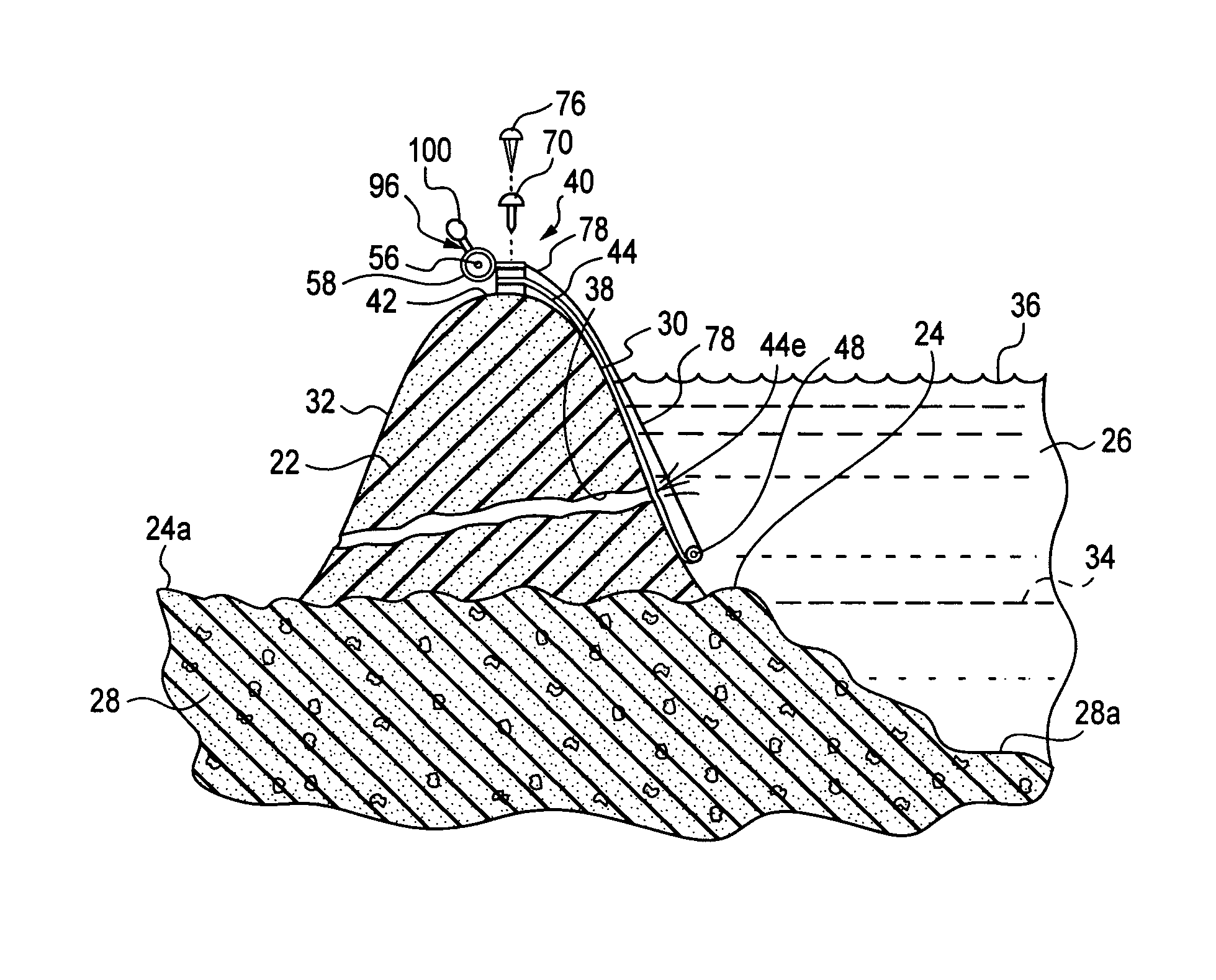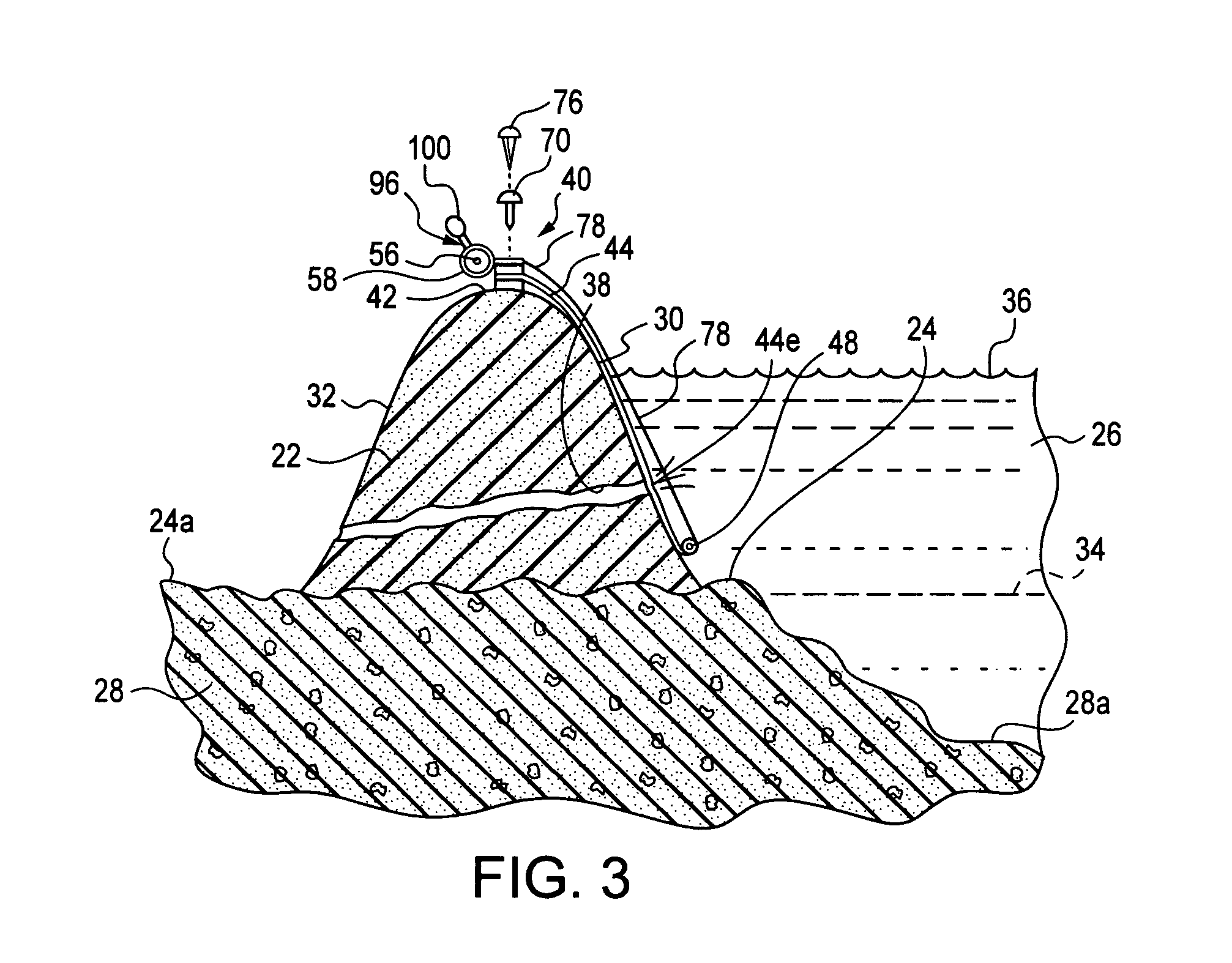Apparatus for and methods of stabilizing a leaking dam or levee
a technology applied in the field of apparatus for and methods of stabilizing a leaking dam or levee, can solve the problems of destroying the protective features affecting the stability of earth dams and levees, so as to facilitate the stopping of undesirable water leakage, maintain and stabilize the integrity of the dam
- Summary
- Abstract
- Description
- Claims
- Application Information
AI Technical Summary
Benefits of technology
Problems solved by technology
Method used
Image
Examples
Embodiment Construction
[0031]Referring to FIG. 1, an earth dam 20 is formed with a mound-like cross section, and is composed of compacted soil 22, which could include limited amounts of rock and pebble. The earth dam 20 is located along the shoreline or bank 24 of a body of water, hereinafter referred to as the water 26. The bank 24 is formed by an upper level of a land mass 28, with a depression in the land mass forming a bed 28a for the water 26. The water 26 may be quiescent, such as, for example, in a lake, or moving, such as, for example, in a canal. The earth dam 20 is formed with a water-covered side 30, which is in engagement with the water 26, and an uncovered side 32, which is on a side of the dam opposite from the water-covered side. The earth dam 20 must be of sufficient integrity to withstand the hydrostatic pressure exerted thereon by the water 26.
[0032]Normally, the upper level of the water 26 will be below the bank 24, as illustrated by the dashed line 34 in FIG. 1. Under this circumstance...
PUM
 Login to View More
Login to View More Abstract
Description
Claims
Application Information
 Login to View More
Login to View More - R&D
- Intellectual Property
- Life Sciences
- Materials
- Tech Scout
- Unparalleled Data Quality
- Higher Quality Content
- 60% Fewer Hallucinations
Browse by: Latest US Patents, China's latest patents, Technical Efficacy Thesaurus, Application Domain, Technology Topic, Popular Technical Reports.
© 2025 PatSnap. All rights reserved.Legal|Privacy policy|Modern Slavery Act Transparency Statement|Sitemap|About US| Contact US: help@patsnap.com



